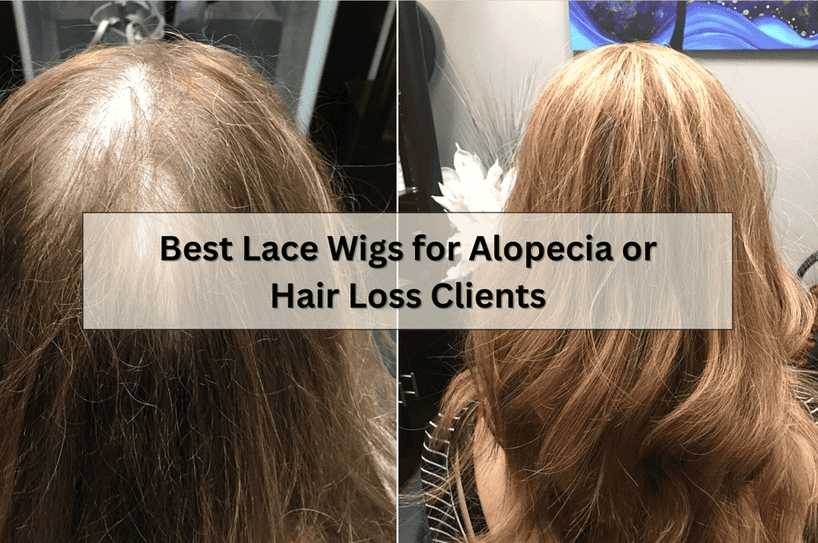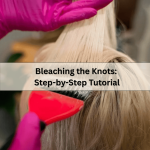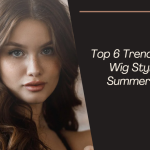Hair Knowledge
Best Lace Wigs for Alopecia or Hair Loss Clients
Hair loss due to alopecia, medical treatment, or other conditions can deeply impact confidence and self-image. Fortunately, high-quality lace wigs offer both a natural look and comfort for sensitive scalps. This guide will walk you through the best lace wigs for alopecia, how to choose the right one, and what features to look for to ensure a secure, natural, and irritation-free fit.
I. Why Lace Wigs Are Ideal for Alopecia Clients
Lace wigs have become a top choice for people experiencing hair loss because of their realistic appearance and versatility. The lace material blends seamlessly into the scalp, creating the illusion of natural hair growth while offering lightweight comfort.
Benefits include:
-
Natural hairline: Hand-tied lace mimics real hair follicles.
-
Breathable cap: Prevents scalp irritation, especially important for sensitive skin.
-
Versatile styling: You can part, curl, or straighten the hair just like natural hair.
-
Protective solution: Keeps your natural scalp protected from environmental stressors.
II. Types of Lace Wigs Suitable for Alopecia Clients
1. Full Lace Wigs
-
Entire cap is made of lace, allowing maximum breathability and comfort.
-
Offers the most styling flexibility—ponytails, braids, or updos look completely natural.
-
Best for clients with total hair loss who need scalp-friendly materials.
2. Lace Front Wigs
-
Lace only at the hairline, with a more durable cap at the back.
-
Gives a natural-looking front hairline at a more affordable price.
-
Ideal for partial hair loss clients who still want a realistic appearance.
3. Medical-Grade Lace Wigs
-
Specifically designed for sensitive scalps.
-
Often feature hypoallergenic lace, silicone lining for better grip, and lightweight construction.
-
Recommended for clients undergoing chemotherapy or with chronic scalp sensitivity.
III. Best Hair Types & Key Features to Look For
When selecting the best lace wigs for alopecia, both the hair type and the wig’s structural features are equally important. The right combination ensures not only a natural appearance but also long-term comfort, especially for sensitive or fully exposed scalps.
1. Human Hair vs. Synthetic Hair
-
100% Human Hair Wigs: These provide the most realistic look and feel, moving and flowing just like natural hair. They can be heat-styled, dyed, and curled, making them highly versatile for clients who want flexibility in their look.
-
Remy Human Hair: A premium form of human hair with all cuticles aligned in the same direction, reducing tangling and frizz. Remy wigs are smoother, shinier, and more durable than non-Remy hair.
-
Virgin Human Hair: Unprocessed and chemical-free, offering the highest quality for longevity and natural movement. Ideal for clients who want to invest in a wig that will last for years with proper care.
-
Synthetic Hair: While more affordable, synthetic wigs tend to be less breathable and cannot be styled with heat. However, high-grade heat-resistant synthetics can be a temporary solution for those with budget limitations.
2. Cap Construction for Comfort and Security
-
Full Lace Caps: Provide maximum breathability and styling flexibility. Every strand is hand-tied, making them comfortable for those with complete hair loss.
-
Medical-Grade Lace Caps: Specifically engineered for sensitive scalps, often featuring hypoallergenic lace, silicone grip linings, and ultra-light materials to prevent irritation.
-
Adjustable Fit Systems: Look for wigs with elastic bands, Velcro straps, or silicone grips for a secure yet gentle hold—important for clients without natural hair to anchor the wig.
3. Lace Quality & Hairline Design
-
Soft Swiss Lace or HD Lace: Gentle on sensitive skin while providing a nearly invisible hairline. HD lace blends seamlessly into all skin tones for the most realistic effect.
-
Pre-Plucked Hairline: Mimics natural hair growth patterns, reducing the need for extra customization.
-
Bleached Knots: Makes the wig appear as though hair is growing directly from the scalp, enhancing realism.
4. Weight & Breathability
Alopecia clients often wear wigs for long hours, so weight matters. Choose lightweight wigs with breathable caps to prevent overheating or discomfort during extended wear.
5. Customization Options
Clients with hair loss benefit from wigs tailored to their head measurements. Custom-sized caps ensure a secure fit without pressure points, which is essential for comfort and confidence.
IV. Care Tips for Lace Wigs in Hair Loss Clients
-
Gentle washing: Use sulfate-free, moisturizing shampoos.
-
Avoid excessive heat: Protect hair strands to extend lifespan.
-
Store properly: Place on a wig stand to maintain shape.
-
Protect at night: Use a silk scarf or satin pillowcase to prevent friction.
Conclusion
Choosing the best lace wigs for alopecia is about balancing natural appearance, comfort, and scalp health. Full lace wigs provide ultimate realism, while medical-grade designs cater specifically to sensitive scalps. Investing in high-quality human hair ensures durability and a look that feels truly your own.
Whether you’re a salon owner advising clients or someone personally seeking a hair replacement solution, the right lace wig can restore not just your hair—but your confidence.





